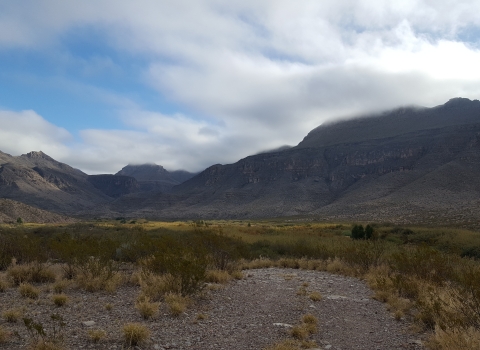Duck hunting holds a special place in the hearts of many Texans, symbolizing a connection to the land, tradition, and camaraderie. At the Lavaca Rio Ranch in Jackson County, this heritage of duck hunting isn't just a pastime; it is a way to preserve the natural landscape.
Like many ranches on Texas' Gulf Coast prairie, the property was historically used for cattle ranching and rice farming. While it was hunted back then, Ranch Manager Brent Friedrichs said it didn’t provide much opportunity for ducks.
Today, the land tells a different story. While up to 300 cows and their calves still graze the 5,500 acre property, a lot of other species are thriving on it, too. Thanks to prescribed fire, planting food plots for game birds, managing cattle grazing and constructing wetlands, a wide variety of migratory and resident wildlife call the ranch home.
By promoting healthy habitats, the ranch not only enhances the hunting experience but also ensures that future generations can share these memorable moments in nature.
“You see turkeys up by the wetlands nesting, you’ll see 60 deer out there with their fawns, thousands of ducks sometimes -- seeing that is a good feeling,” Friedrichs said. “You feel like you did a small part of bringing something back to the way it used to be.”
The ranch is also home to other unique species like roseate spoonbills, greater yellowlegs, plovers, mottled ducks and wood ducks. This year the ranch even has three pairs of nesting bald eagles.
“That’s a pretty high concentration of eagles,” said Chad Stinson, a biologist with the U.S. Fish and Wildlife Service’s Partners for Fish and Wildlife Program. “That is all about water.”
The Partners for Fish and Wildlife Program has been working with the Lavaca Rio Ranch for nearly a decade, providing financial and technical assistance for projects that improve wildlife habitat on the land. This assistance has primarily focused on the construction of wetlands and wetland habitat for breeding and wintering waterfowl.
“I’m very skeptical to make permanent changes to a landscape because it was there for a reason – but those old rice fields, that’s not the way it used to be,” Friedrichs said. “This country was naturally the prairie potholes. We’re trying to bring it back.”
Prairie pothole wetlands once covered up to 30% of the Texas coastal prairie, but in the last century much of it was leveled and converted to agriculture.
To help restore and create new shallow-water wetlands, Ducks Unlimited, Texas Parks and Wildlife, U.S. Fish and Wildlife Service, and USDA Natural Resources Conservation Service launched the Texas Prairie Wetlands Project in 1991.
The aim of the project is to provide wintering waterfowl with improved habitats, enhancing survival and body condition for spring migration.
“The Texas Prairie Wetlands Project functions on a landscape level,” Stinson said. “It’s been around for 30 years and completed 100,000 acres of wetland restoration and construction. These wetlands provide anywhere from 12-16 percent of fresh water along the coast in any given year, so that’s a high impact."
To help create the wetlands at Lavaca Rio Ranch, the Partners for Fish and Wildlife Program provided cost share and design assistance on the permanent levees and water control structures, while the ranch staff led the construction and provide ongoing management of the units.
Part of the plan is managing the seasonal water levels to promote healthy vegetation and provide habitat for migratory and resident waterfowl, including the nesting mottled and whistling ducks that benefit from a late-season drawdown.
Because the property was used for rice farming, Friedrichs is easily able to control the depth of the wetlands using a well, which means he doesn’t have to rely solely on runoff or rainfall.
“We can flood them at different times, so ducks will come in and hammer one and then we can push water into a new one,” Friedrichs said. “We always have some fresh water and some good feed and then at the end of the year we have everything flooded, which can make it harder to hunt but it makes it better for the species.”
For both the ranch and the Partners for Fish and Wildlife Program, the primary goal of creating the wetlands is to improve habitat for ducks. But ducks and duck hunters aren’t the only ones who benefit.
“We target about 16 species of ducks, but that’s really just the tip of the iceberg,” Stinson said. “Wetlands hold more wildlife biomass than anywhere else here. There’s another 40-50 species that use these habitats including amphibians, reptiles and birds.”
The wetlands have other benefits too, including to the ranch’s cattle operation. Stinson explained that as the wetland units dry down slowly, they can end up providing the best grazing opportunity on the property during times of drought.
"We actually have several ranchers that have built wetlands for ducks, and they say this is really good for the cattle too,” Stinson said.
For Friedrichs, who lives on the property with his family, another benefit is instilling the joy of nature in the next generation.
“My daughter loves it, and she doesn’t even hunt,” Friedrichs said. “In the morning you can lay on the bank and see all of those ducks coming, and you can hear the mallards, widgeon and pintail talking up there, and she just lays there and listens.”
To learn more about the Partners for Fish and Wildlife Program, visit https://www.fws.gov/program/partners-fish-and-wildlife.











